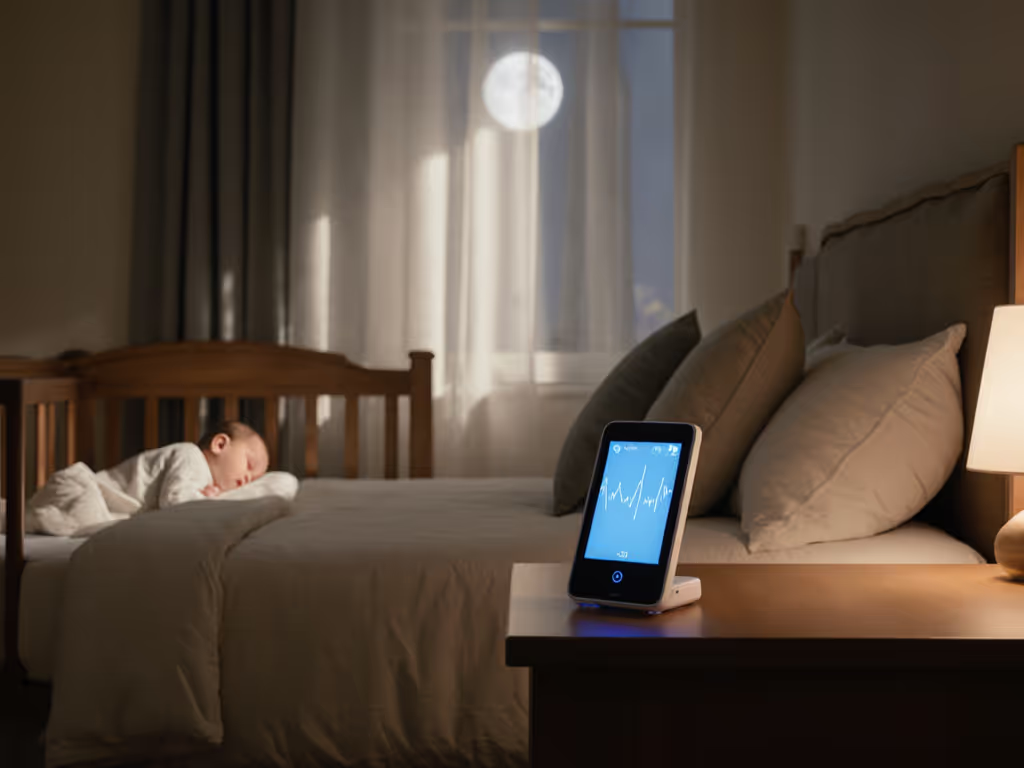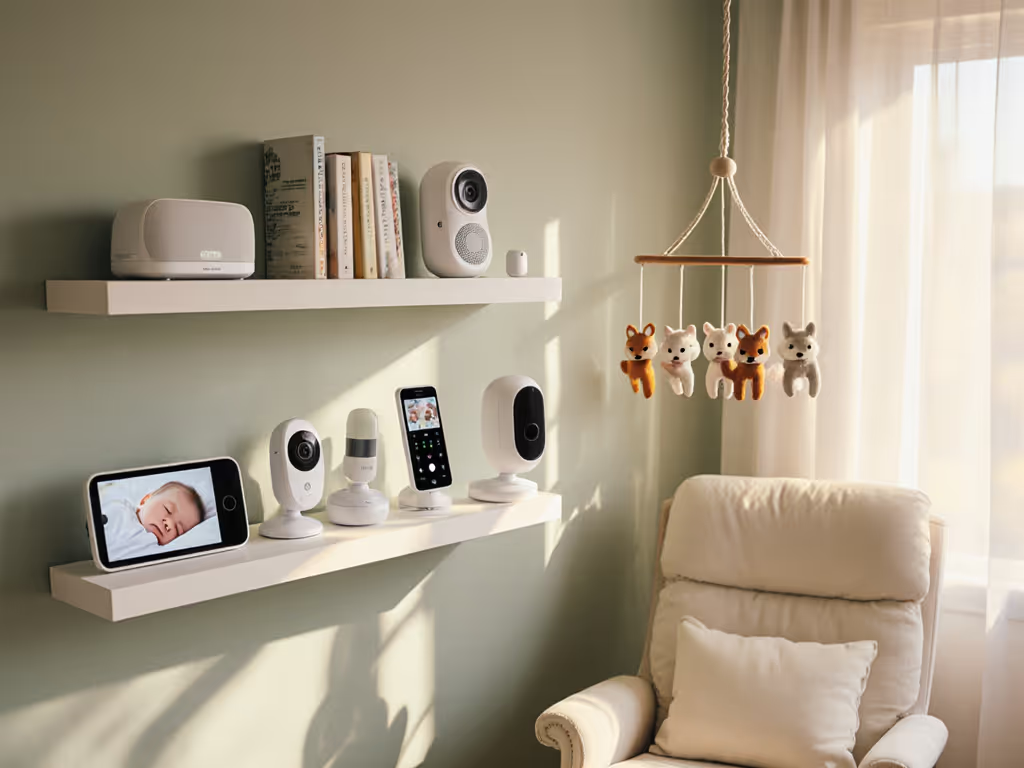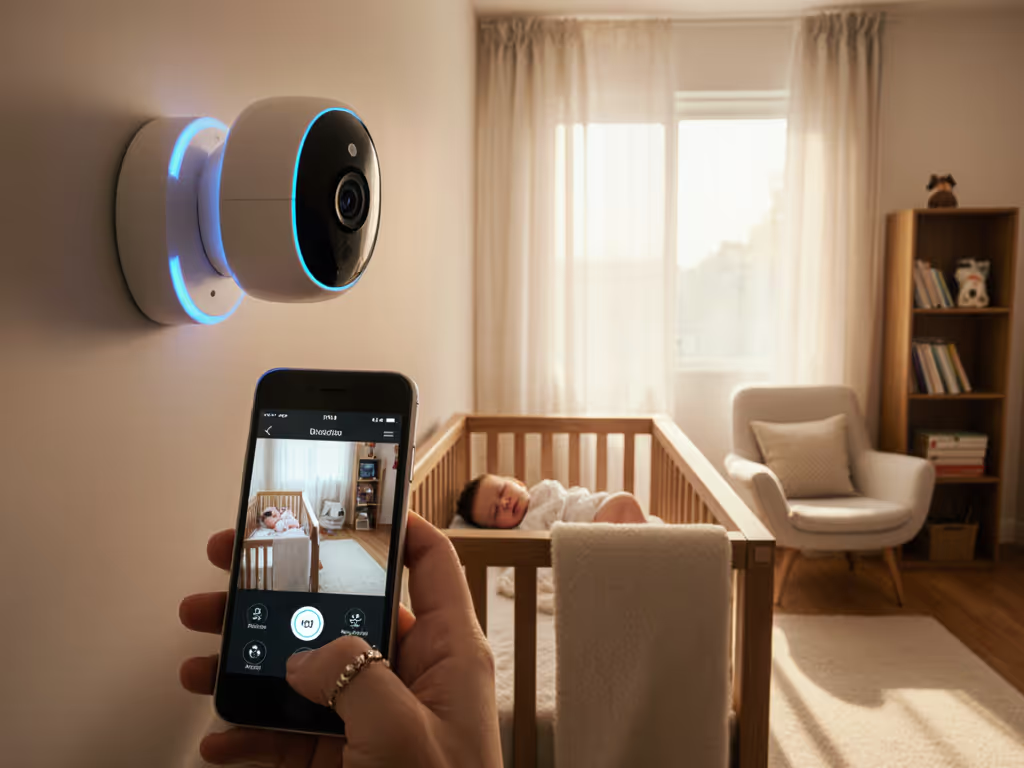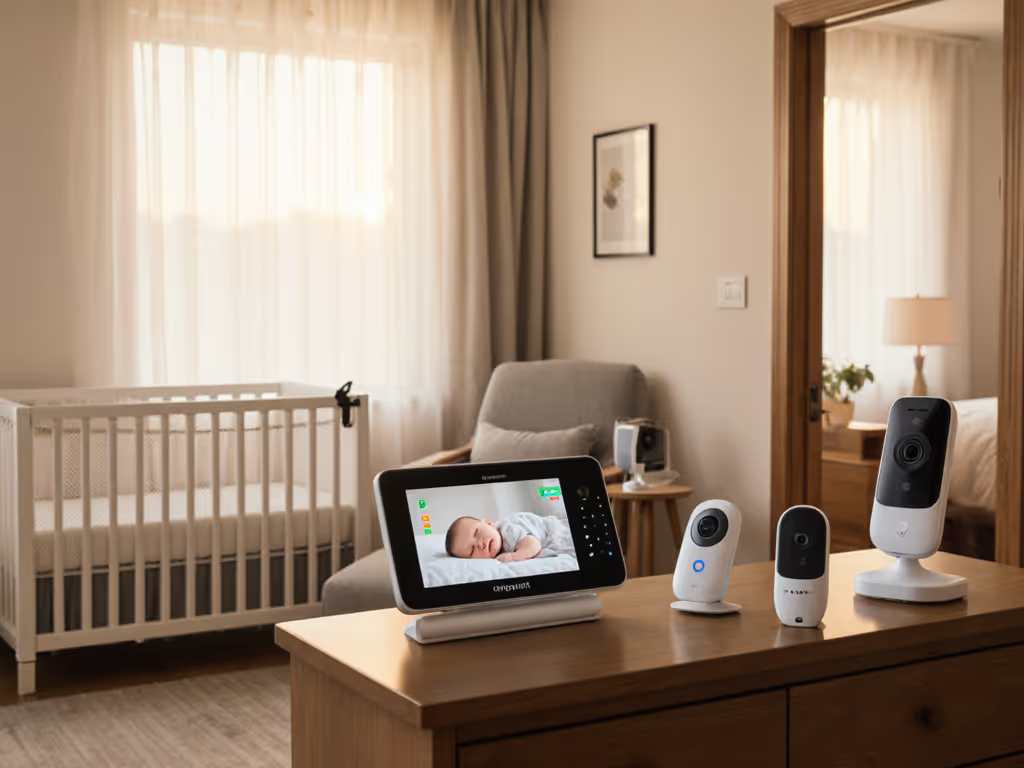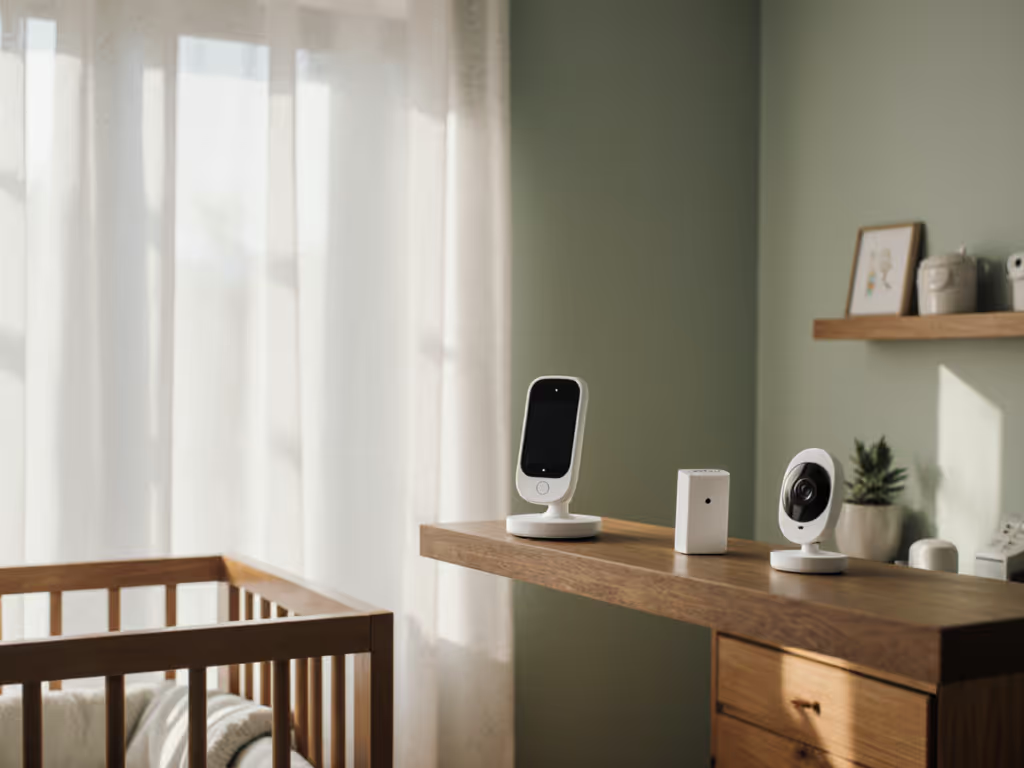
How to Set Up Video Monitoring for Babies Securely
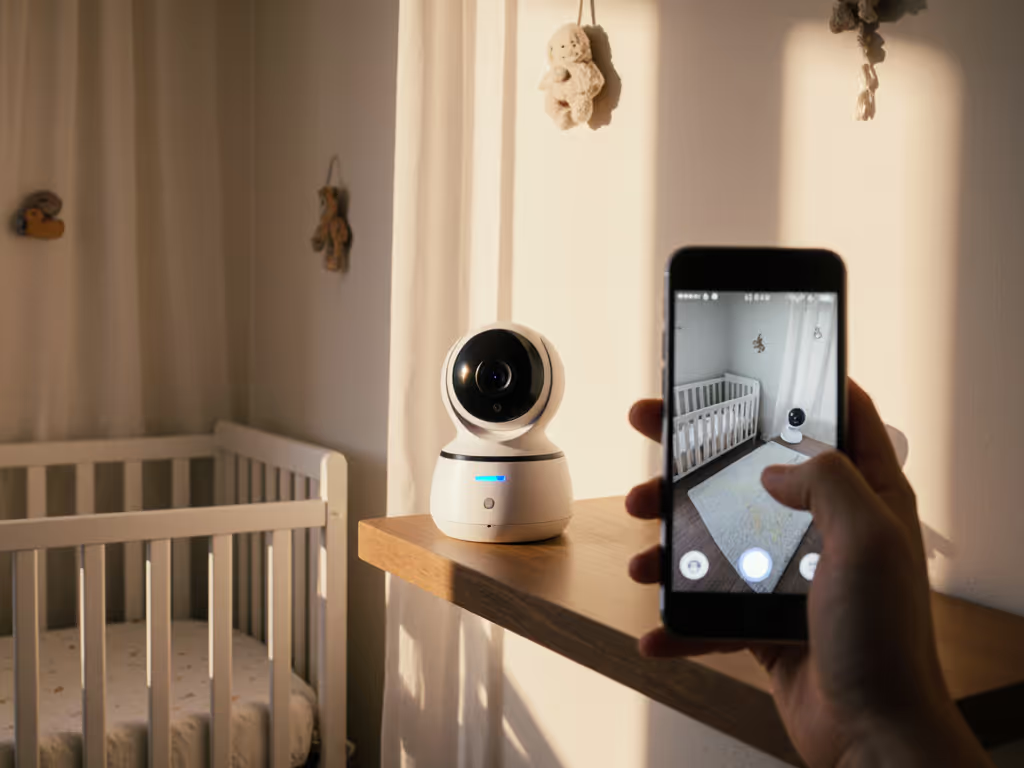
Did you know that nearly two in five parents worry about their baby monitor’s security? Protecting your child’s privacy starts before you even plug in a camera. With hackers targeting connected devices more than ever, picking the right baby monitor can mean the difference between peace of mind and hidden risks. Learn how simple steps and smart setup choices can help you secure those precious moments right from the start.
Quick Summary
| Key Point | Explanation |
|---|---|
| 1. Choose Secure Video Monitors | Select monitors with strong encryption like AES or WPA3 for enhanced privacy protection. |
| 2. Install Cameras Safely | Mount cameras at least six feet above the crib to prevent risks from cords and positions. |
| 3. Strengthen Network Security | Use WPA3 or WPA2 encryption, create unique passwords, and consider a dedicated network for extra safety. |
| 4. Optimize Device Settings | Adjust sound and motion sensitivities to minimize alerts while ensuring accurate monitoring. |
| 5. Test for Performance Reliability | Regularly check video quality, signal strength, and alert responsiveness to maintain effective coverage. |
Step 1: Choose a Privacy-Focused Video Monitor
Selecting a secure baby video monitor means protecting your family's most precious moments from digital vulnerabilities. The right monitor acts like a digital fortress around your nursery protecting your child's privacy and keeping unwanted digital eyes away.
When hunting for a privacy-conscious monitor, start by understanding your connection options. Wi-Fi monitors offer convenience but require extra security precautions. Look for models supporting advanced encryption protocols like AES and WPA3 that scramble potential intrusion attempts. Brands such as Nanit Pro and Miku Pro excel here with end-to-end encryption and optional two-factor authentication.
Non-Wi-Fi monitors using FHSS (Frequency Hopping Spread Spectrum) or DECT (Digital Enhanced Cordless Telecommunications) technologies provide inherent security by operating on closed communication systems. These units broadcast signals across multiple frequencies making unauthorized interception significantly more challenging.
Key privacy features to prioritize include:
Here's a comparison of common privacy features in baby video monitors:
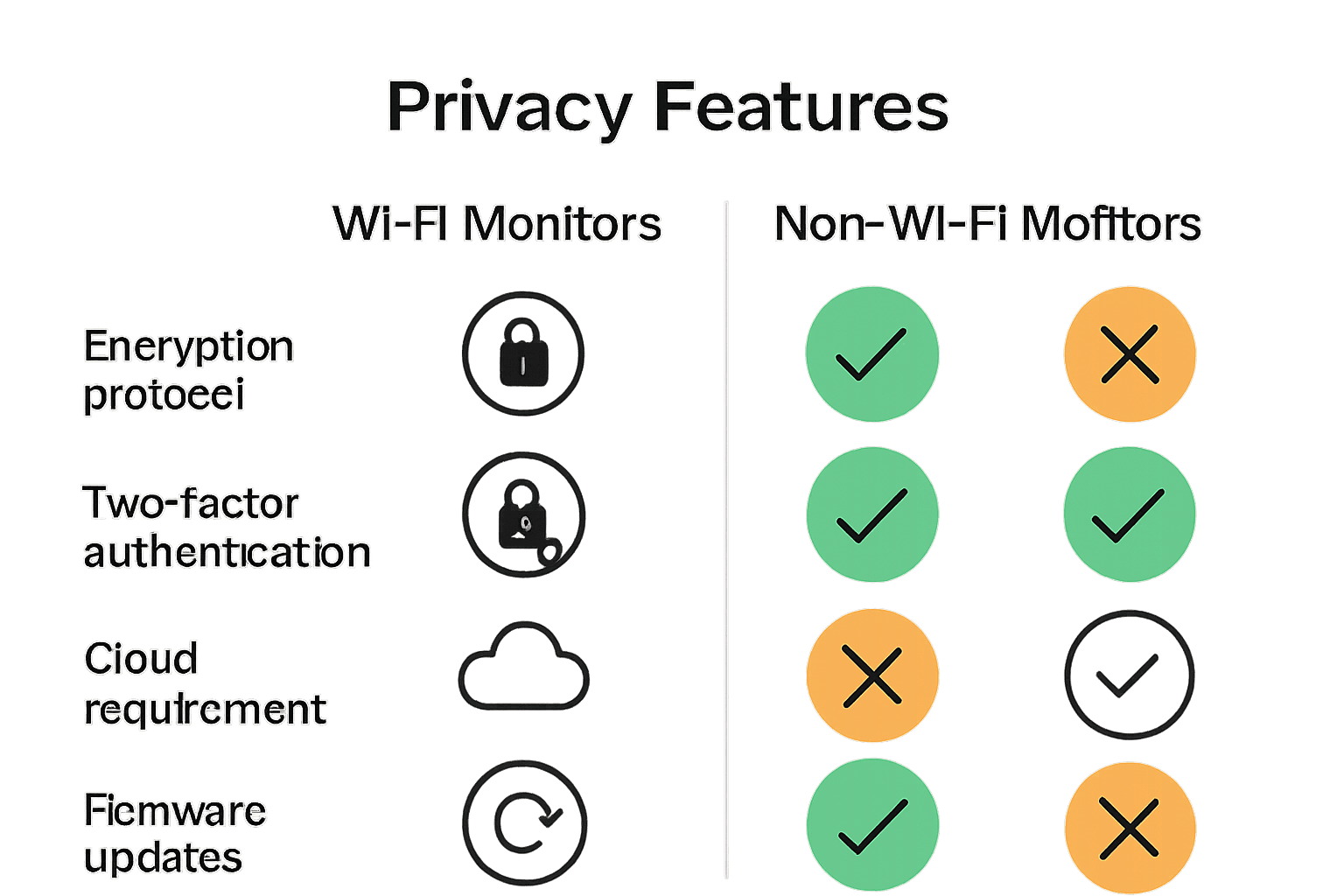
| Privacy Feature | Wi-Fi Monitors | Non-Wi-Fi Monitors |
|---|---|---|
| Encryption Protocols | WPA2, WPA3, AES | FHSS, DECT |
| End-to-End Encryption | Often available | Not typical |
| Two-Factor Authentication | Sometimes included | Rare |
| Firmware Updates | Automatic/manual | Rarely needed |
| Local Storage | Often available | Standard |
| Cloud Connection Requirement | Often required | Not required |
- Strong Wi-Fi security protocols (WPA2 or WPA3)
- End-to-end encryption
- Two-factor authentication options
- Automatic firmware update capabilities
- Local storage alternatives
- No mandatory cloud connections
Pro Parent Tip: Never use default passwords. Always customize login credentials and enable two-factor authentication if available.
As you move forward in your monitoring setup journey, understanding these privacy fundamentals will help you make an informed choice that keeps your little one safe both physically and digitally. Your next step involves evaluating specific monitor models with these security standards in mind.
Step 2: Position and Install the Camera Safely
Installing your baby monitor camera requires precision and careful planning to ensure both optimal viewing and maximum safety. Your goal is creating a clear monitoring setup that protects your child while providing comprehensive room coverage.
Start by selecting a strategic mounting location that offers an unobstructed view of the entire crib area. Experts recommend positioning the camera at least six feet from the crib to minimize electromagnetic exposure and reduce potential cord risks. A high corner wall mount or a sturdy shelf works best for achieving this ideal distance.
Critical safety considerations dictate that you must secure all camera cords completely out of your baby's reach. Dangling wires pose a serious strangulation hazard, so use dedicated cord management solutions or wall mounting techniques that keep cables tucked away and inaccessible. If using a shelf mounted camera, ensure it is firmly anchored and cannot be pulled down by curious little hands.
Key camera placement guidelines include:
- Mount camera at least six feet from crib
- Secure all electrical cords
- Choose a high angle for best viewing
- Ensure camera cannot be reached by child
- Avoid direct overhead positioning
Safety Alert: Always perform a stability check on your camera mount. Gently tug and test the mount to confirm it will not easily detach or fall.
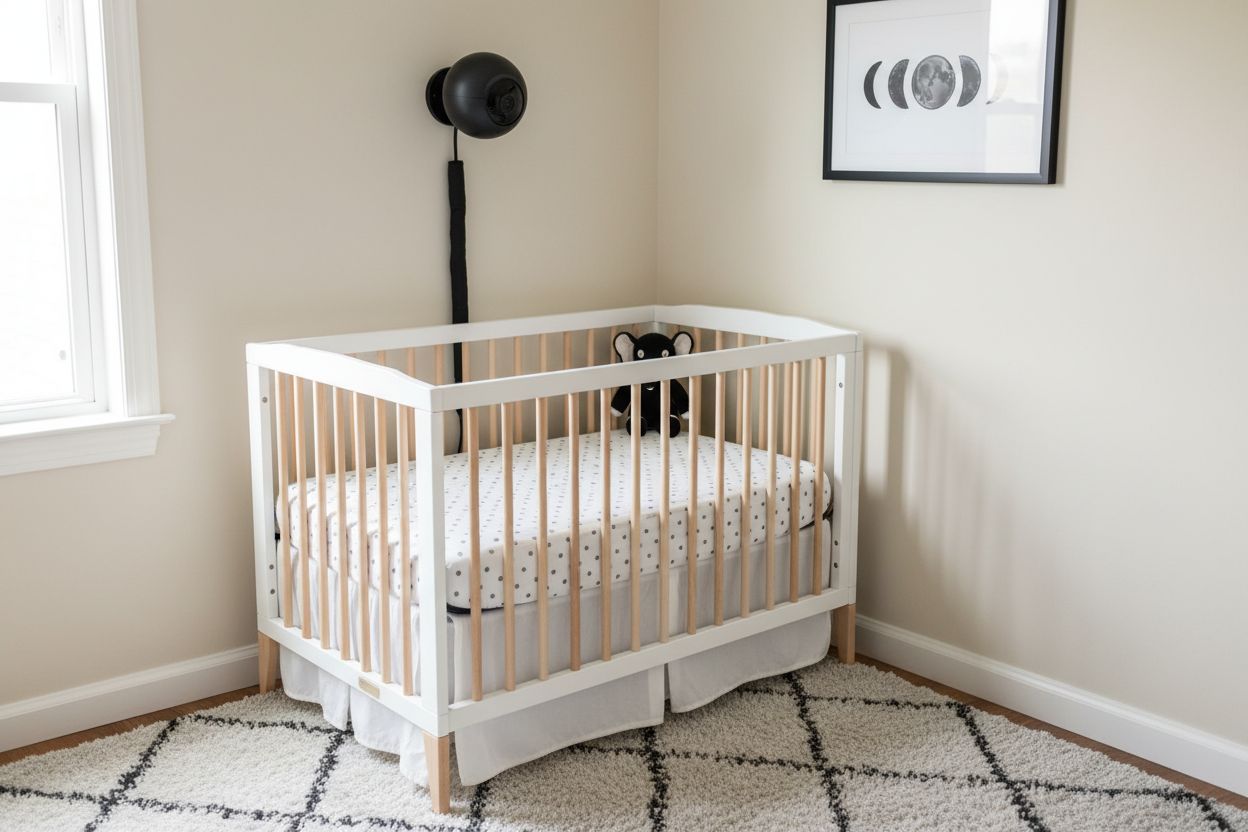
With your camera strategically positioned, you are creating a secure monitoring environment that balances visual clarity with your child's physical safety. Your next step involves configuring the monitor's specific viewing and recording settings to maximize your surveillance capabilities.
Step 3: Connect and Set Up Secure Network Access
Setting up a secure network connection for your baby monitor transforms a simple device into a robust digital guardian. Your mission is creating an impenetrable digital perimeter that keeps your family's private moments completely protected.
Start by configuring your home Wi-Fi with the strongest available security protocol. WPA3 offers the most advanced protection if your router supports it otherwise WPA2 remains a solid choice. Create a unique network name that does not reveal personal information and generate a complex password combining uppercase lowercase numbers and special characters.
Consider creating a separate guest network specifically for your baby monitor. This network isolation strategy adds an extra layer of protection by separating your monitor from primary devices like smartphones and computers. Such segmentation reduces potential vulnerability points and limits unauthorized access opportunities.
Key network security steps include:
- Enable WPA3 or WPA2 encryption
- Create a unique network name
- Use a complex password
- Activate two factor authentication
- Apply regular firmware updates
- Isolate monitor on dedicated network
Pro Security Tip: Change default login credentials immediately and avoid using easily guessable passwords like birthdays or sequential numbers.
By implementing these network security measures you transform your baby monitor from a potential digital weakness into a fortified communication channel. Your next step involves fine tuning specific device settings to further enhance your monitoring ecosystem.
Step 4: Adjust Settings for Optimal Performance
Configuring your baby monitor settings is like creating a personalized digital guardian that adapts precisely to your nursery environment. Your goal is fine tuning the device to provide accurate monitoring without overwhelming you with unnecessary alerts.
Start by carefully calibrating sound and motion sensitivity levels. Most monitors allow you to adjust the threshold for audio and movement detection. Set the sensitivity too high and you will be bombarded with constant notifications. Set it too low and you might miss important moments. Experiment with different settings during daytime testing to find the perfect balance that captures genuine needs without creating alarm fatigue.
Room positioning plays a critical role in performance. Avoid placing the monitor near heat vents or direct sunlight which can distort temperature readings and create interference. Test the audio clarity by walking around the room and checking signal strength. Ensure the monitor provides clear sound without static or unnecessary background noise.
Key performance optimization steps include:
- Adjust sound sensitivity levels
- Calibrate motion detection threshold
- Test audio clarity in different room locations
- Check temperature accuracy
- Minimize potential signal interference
- Update firmware regularly
Pro Parent Tip: Perform a comprehensive test run during naptime to validate your settings without disrupting nighttime sleep patterns.
By meticulously adjusting these settings you transform your baby monitor from a basic device into a precision monitoring tool. Your next step involves understanding how to interpret and respond to the information your newly configured system provides.
Step 5: Test and Confirm Live Video and Alerts
Validating your baby monitor's performance is the final crucial step in creating a reliable monitoring system. Your goal is ensuring crystal clear visibility and responsive alerts across every inch of your home.
Begin by conducting comprehensive daytime and nighttime video tests. Move around different areas of your home to confirm consistent signal strength and video quality. Pay special attention to potential dead zones where reception might weaken such as near thick walls or far corners of your living space. If you notice signal drops consider using Wi-Fi extenders or repositioning your camera for optimal coverage.
Test your alert system thoroughly by simulating different scenarios. Trigger motion detection by walking near the crib area and verify that notifications arrive promptly on your parent unit or smartphone app. Check audio clarity by generating soft and loud noises to confirm the monitor captures a wide range of sound levels without distortion.
Key testing considerations include:
- Verify video quality in day and night conditions
- Check signal strength throughout your home
- Test motion detection responsiveness
- Confirm audio clarity and sensitivity
- Validate notification speed and reliability
- Ensure multiple device synchronization
Pro Monitoring Tip: Perform weekly signal strength checks as home environments can change and potentially impact monitor performance.
By meticulously testing every aspect of your baby monitor you create a reliable safety net that provides peace of mind. Your comprehensive setup now stands ready to keep a watchful digital eye on your little one.
Ready for Worry-Free Baby Monitoring?
Setting up a secure video monitor for your baby comes with real challenges. Parents want peace of mind but often face tough decisions about Wi-Fi safety, strong encryption, and keeping personal moments private. With confusing technical choices like FHSS, DECT, or two-factor authentication, it is easy to feel overwhelmed. You want a reliable system that works and protects your family, without sacrificing convenience or clarity.
If you are searching for real answers about privacy-focused monitors, trusted product reviews, and step-by-step setup recommendations, let us be your guide. Explore our in-depth reviews of leading devices like Nanit Pro and Miku Pro 2 to compare key features for security. Find expert-backed guidance and practical tools designed for families who value both safety and confidence. Do not leave your child's privacy to chance. Visit babymonitorsforparents.pro today and find the best video monitoring solution for your unique needs right now.
Frequently Asked Questions
How can I choose a secure baby video monitor?
Selecting a secure baby video monitor involves looking for models with strong encryption protocols like AES and WPA3, as well as optional two-factor authentication. Start your search by reviewing different types of monitors and prioritize those with built-in privacy features to protect your family's moments.
What is the best positioning for a baby monitor camera?
For optimal safety and clarity, position your baby monitor camera at least six feet away from the crib. Ensure that it is mounted securely and that any cords are tucked away from your child's reach to prevent strangulation hazards.
How do I set up a secure network for my baby monitor?
To create a secure network for your baby monitor, enable WPA3 or WPA2 on your router and use a complex password. Consider segmenting your monitor onto a guest network to enhance protection; take this step to further isolate your monitoring devices from primary home networks.
What settings should I adjust for my baby monitor to work effectively?
Adjust sound and motion sensitivity levels based on your specific nursery environment to avoid excessive notifications. Regularly test audio clarity and ensure the monitor is not placed near interference sources like heat vents or direct sunlight to maintain optimal performance.
How can I test my baby monitor's performance?
To test your baby monitor's performance effectively, conduct comprehensive checks for video quality during both day and night. Walk around your home to identify any signal drops and simulate alerts to ensure notifications are timely and clear, adjusting your settings as necessary based on your findings.
What steps should I take to maintain my baby monitor's security?
Regularly update your baby monitor's firmware to patch vulnerabilities and review your network's security settings. Change default login credentials immediately and ensure that any monitoring alerts are functioning correctly to safeguard against unauthorized access.

